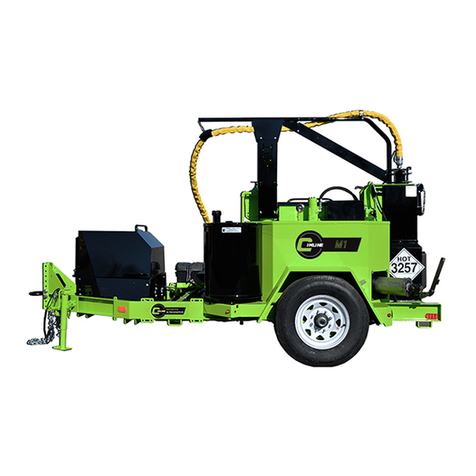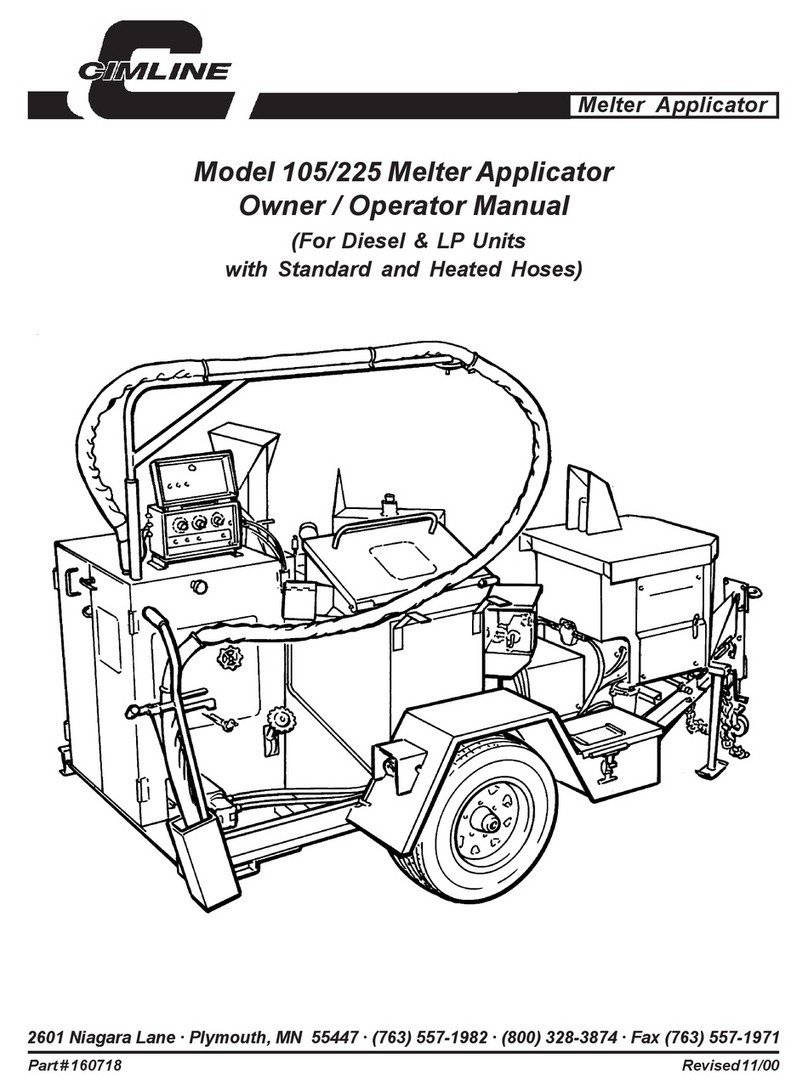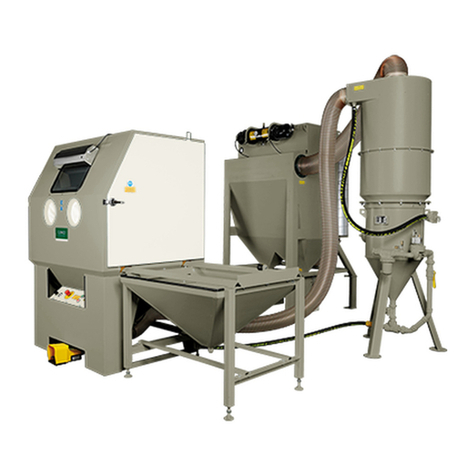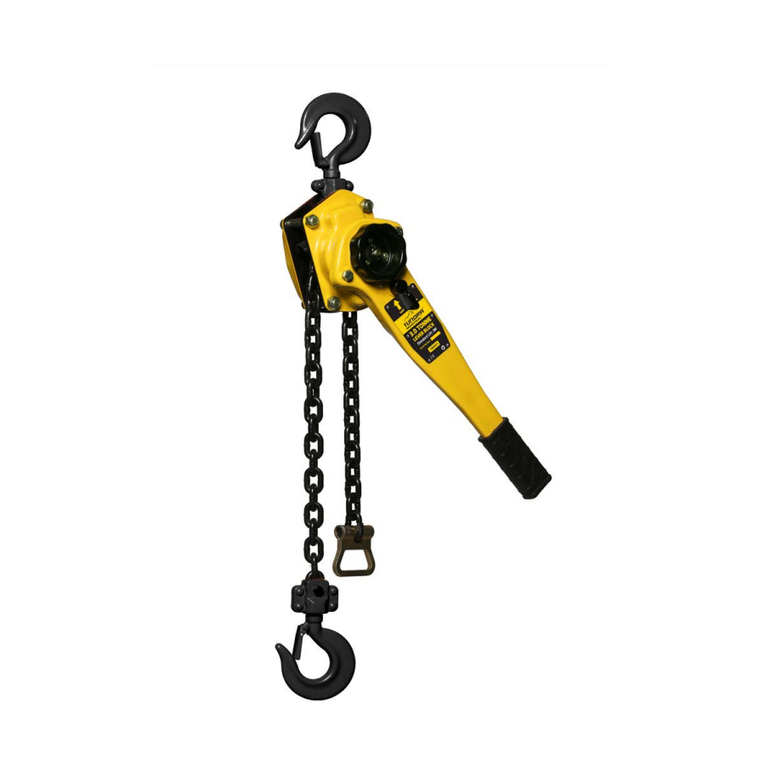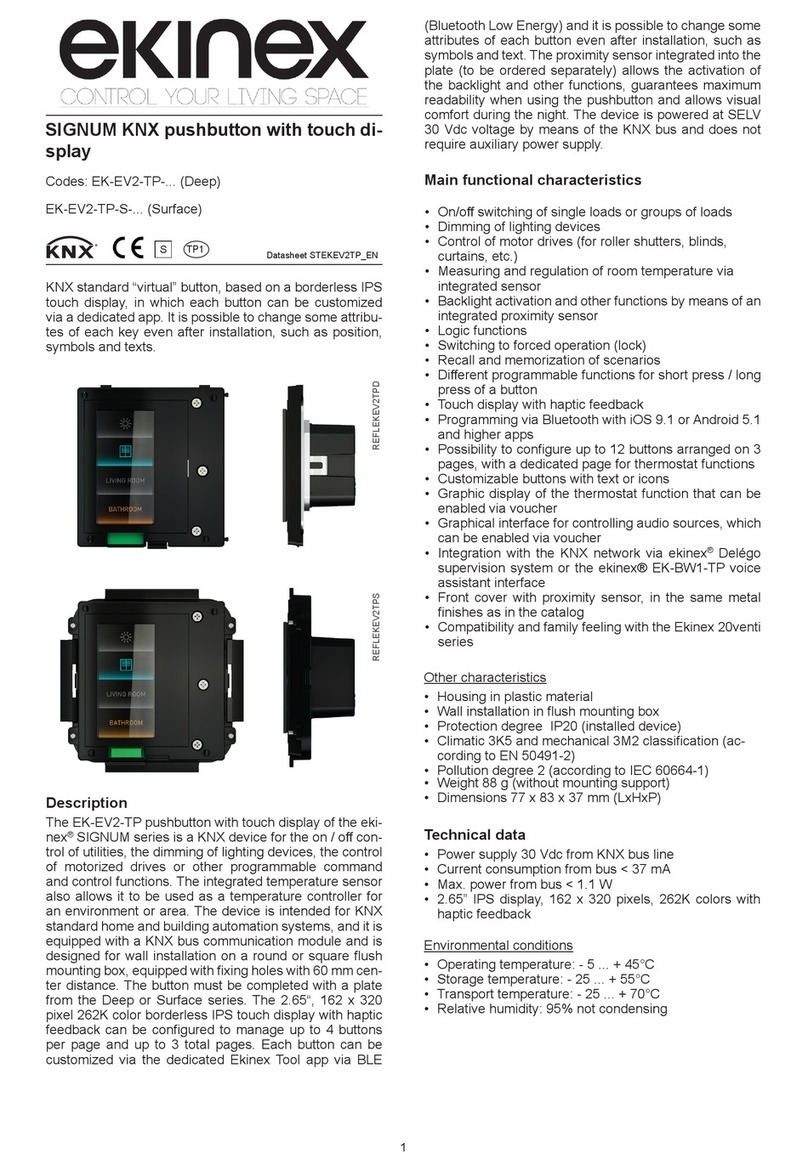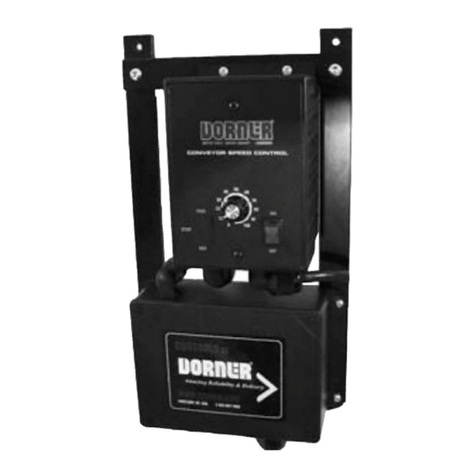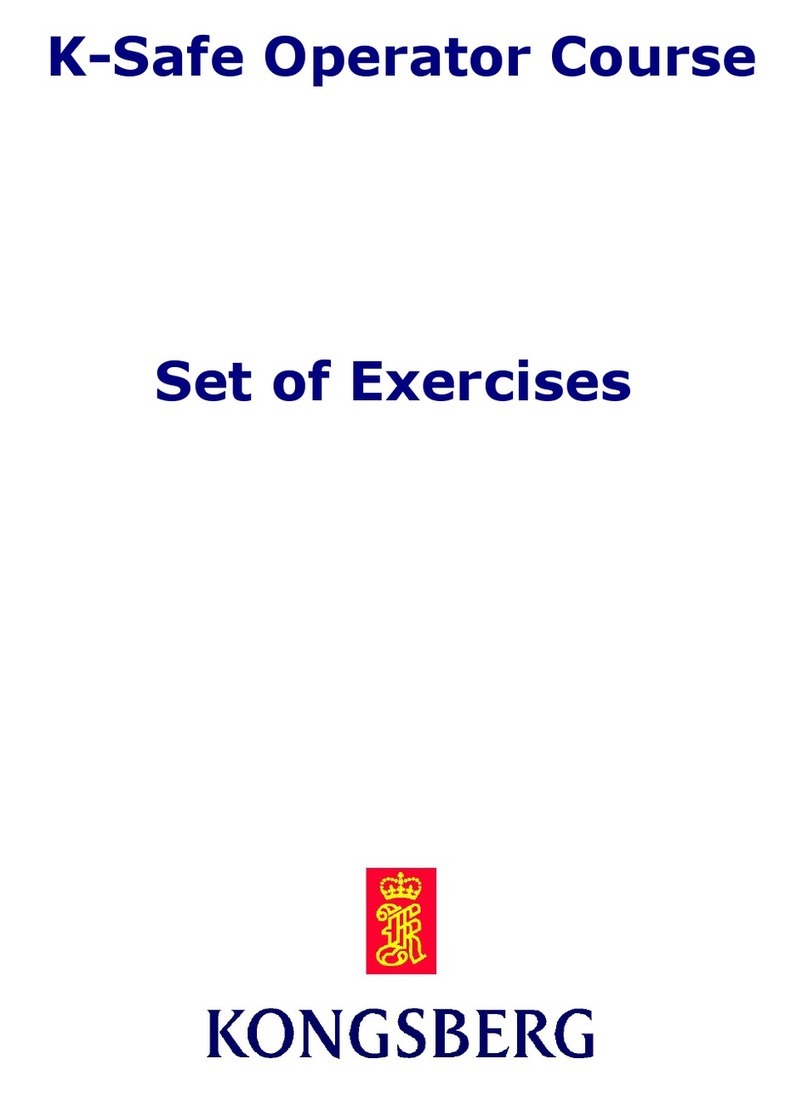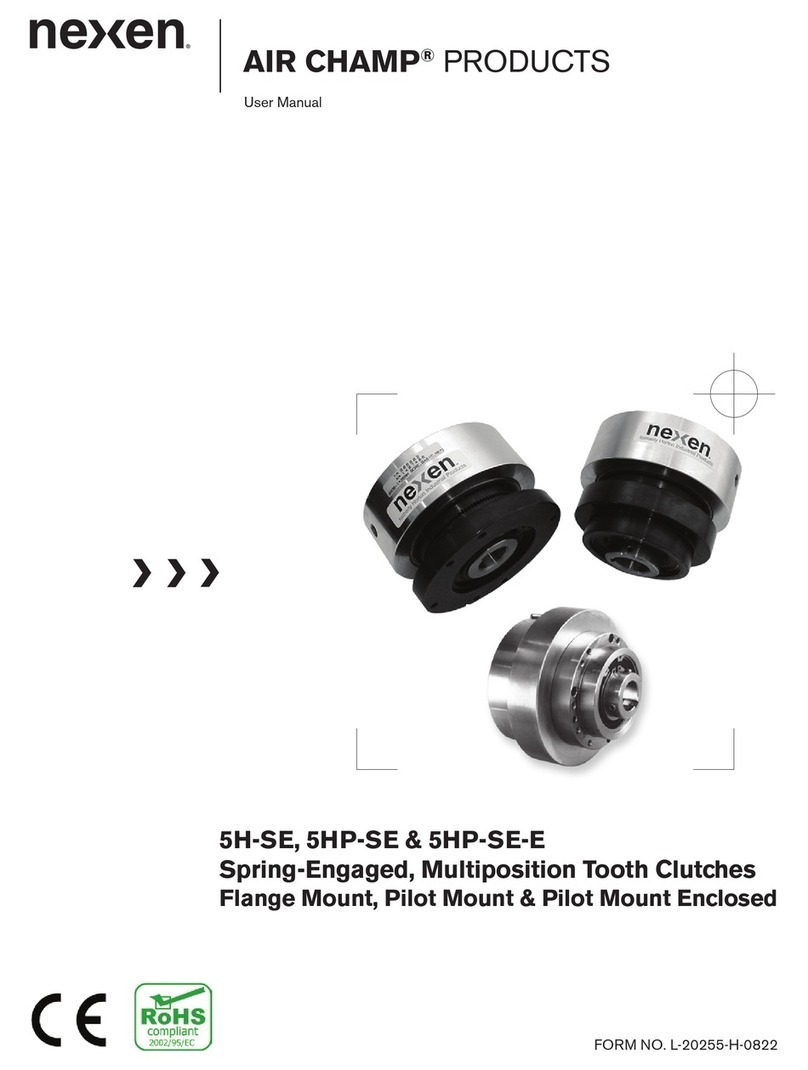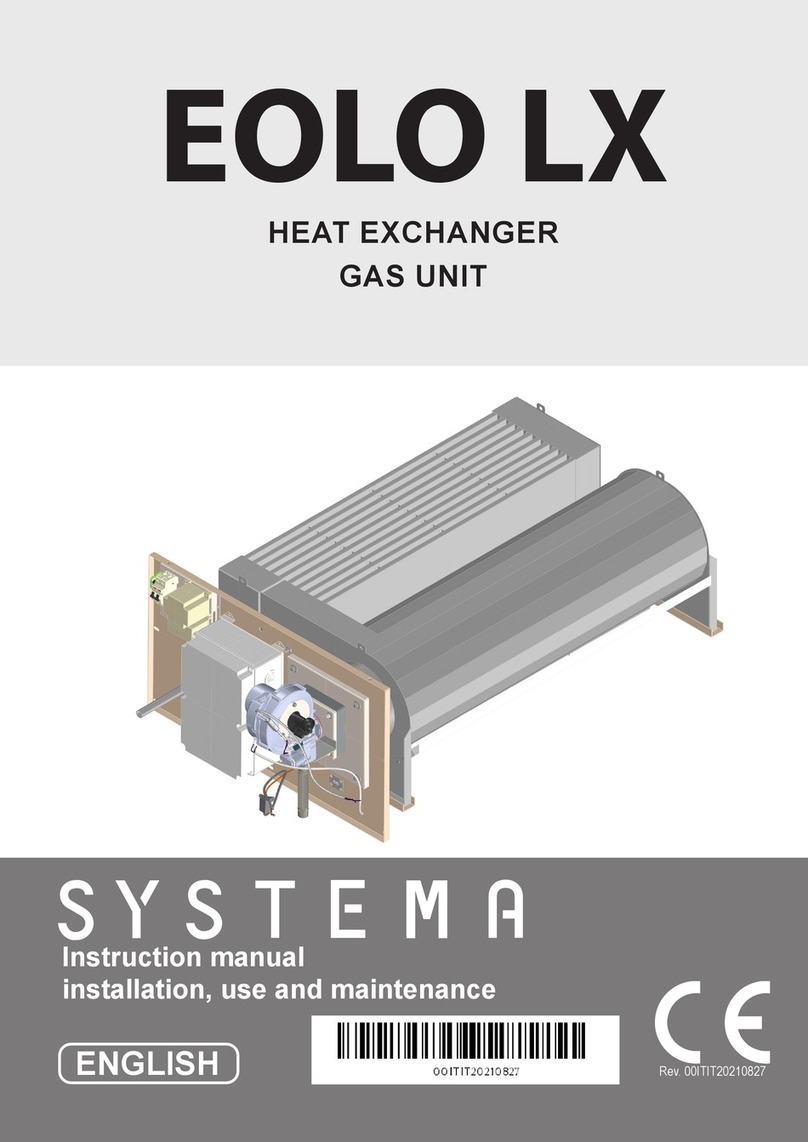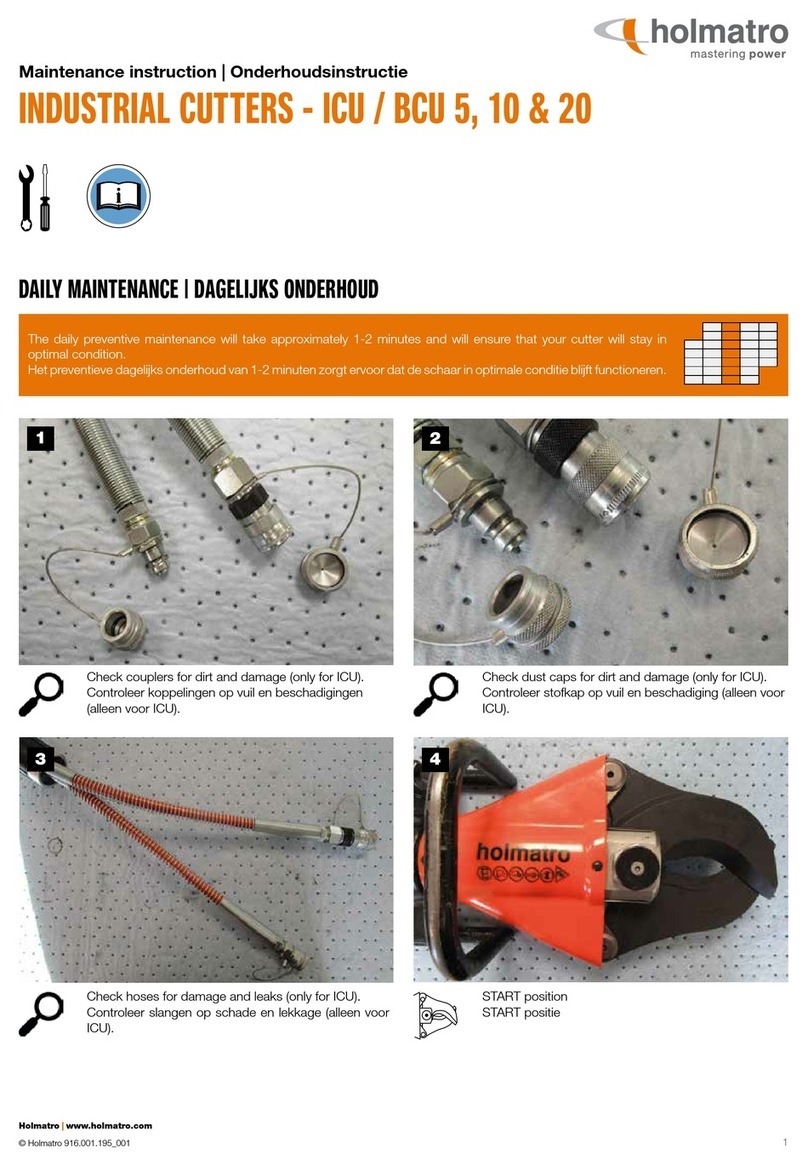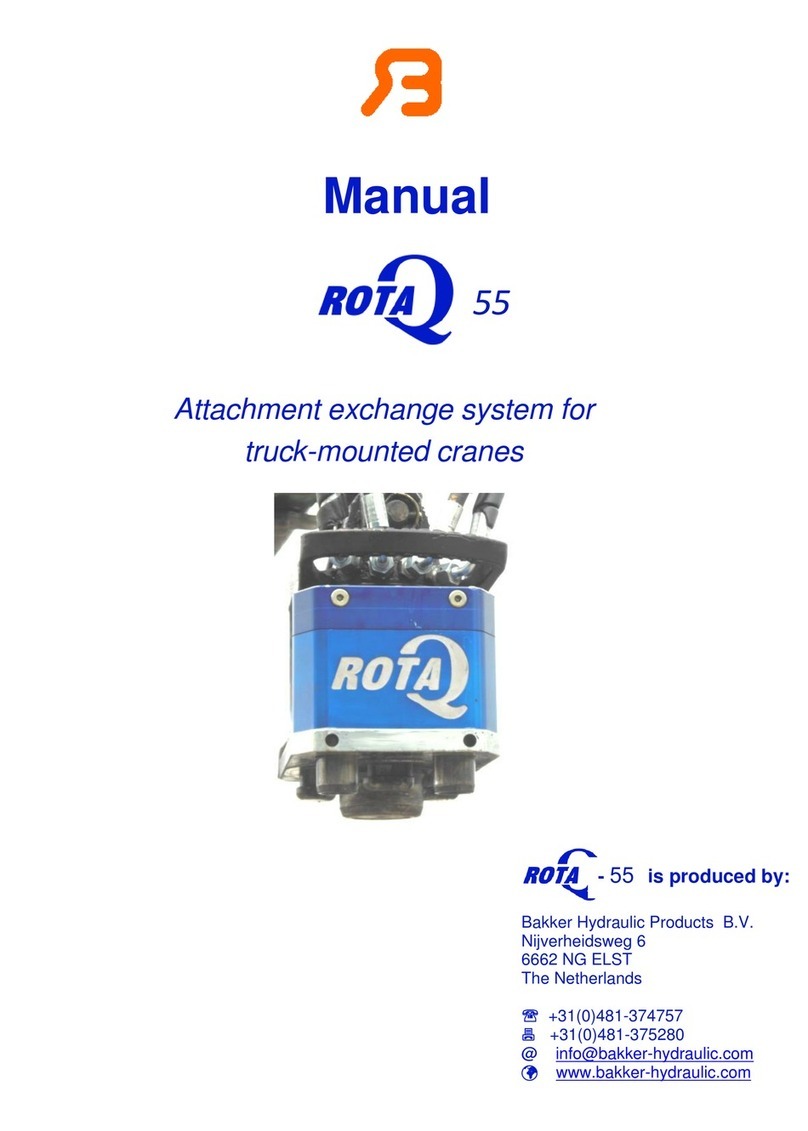CIMLINE ME3 User manual

Mastic Extruder
Owner/Operator Manual
Due to continuous product development some of the details shown in this manual may differ from
your equipment. We reserve the right to change the contents of the manual without notification.
CIMLINE.COM
2601 Niagara Lane · Plymouth, MN 55447 · (763) 557-1982 · (877) 841-0848 · Fax (763) 557-1971
Part # 308-000-000 REV B 06/8/21

2
TABLE OF CONTENTS:
Serial Number, Model Number, Engine Number ..................................................... 3
Contacting Cimline .................................................................................................... 3
Personal Safety, Signal Words in Manual................................................................ 4
Trailer Safety .............................................................................................................. 5
Wheel Specifications ................................................................................................. 6-7
Weights and Dimensions .......................................................................................... 8-9
Replacement Labels .................................................................................................. 10
ME3 Feature Overview............................................................................................... 11
ME3 Controls and Their Functions........................................................................... 12-15
ME3 Start Up Procedure ............................................................................................ 16-17
ME3 Cool Down/Shut Down Procedure.................................................................... 18
ME3 Automatic Temperature Control Setting.......................................................... 19
ME3 Sealant Material Tank Capacity ........................................................................ 19
ME3 Fluid and Components Specs .......................................................................... 20
ME3 Heat Transfer Oil Specs .................................................................................... 21
MAINTENANCE AND TROUBLESHOOTING:
ME3 Maintenance Schedule ...................................................................................... 23
ME3 Maintenance - Key Components ...................................................................... 24
ME3 Maintenance - Changing Heat Transfer Oil...................................................... 25
ME3 Maintenance - Heat Transfer Oil Servicing...................................................... 26-27
ME3 Maintenance - Tank Burner............................................................................... 28-31
ME3 Maintenance - Trouble Shooting Guide ........................................................... 32
PARTS AND ASSEMBLY DRAWINGS:
ME3 Trailer Wiring Diagram and Parts ..................................................................... 34
ME3 Main Wiring Harness ......................................................................................... 35
ME3 Control Panel Wiring Diagram and Parts......................................................... 36-38
ME3 Tank Burner Internal Wiring Diagram .............................................................. 39
ME3 Tank Burner Parts.............................................................................................. 40
ME3 Agitation System Diagram and Parts............................................................... 41
ME3 Hydraulic Manifold Parts and Schematic......................................................... 42-43
ME3 Hydraulic Schematic and LP Component Breakdown ................................... 44-45
ME3 Diesel Engine Components .............................................................................. 46-47
ME3 Miscellaneous Components and Parts ............................................................ 48-49
ME3 Mastic Tools....................................................................................................... 50
Shipping Papers and Information
In addition to this operators manual, a packet containing IMPORTANT INFORMATION has been
enclosed with your Melter.
The follow Manufacturer's Documents are included for the follow parts:
a) Engine
b) Material Pump
c) Burner

3
CONTACTING CIMLINE
At Cimline, impressing the customer is one of our core values. We want to make sure you are
covered for any general or technical questions you may have on your new CIMLINE equipment.
Please use the following information to get the support you need if this manual does not provide the
answers you are looking for.
Cimline Dealer Network:
Your local dealer is always your first point of contact when looking for parts, maintenance, technical
support, warranty information or answers to your questions. No one should know you and your
business better than your local dealer, and they should always be the first call you make when
looking for answers to your questions.
CIMLINE Local Dealer Name: CIMLINE Local Dealer Phone Number:
_________________________________ _________________________________
CIMLINE Sales:
Toll Free: (877) 841-0848 • Telephone: 763-694-2665 • Fax: 866-557-1971
Corporate Headquarters: 2601 Niagara Lane N, Plymouth, Minnesota 55447
www.cimline.com
Any parts orders or service problems relating to CIMLINE equipment
should be directed to your local dealer FIRST.
CIMLINE Customer Care and Technical Service:
CIMLINE Technical Service is available Monday - Friday during normal business hours.
Toll Free: (877) 841-0848 • Telephone: 763-694-2665 • Fax: 866-553-7765
CIMLINE Parts and Warranty Items:
Toll Free: (800) 328-3874 • Telephone: 763-694-2638 • Fax: 866-553-7765
CIMLINE ME3 Serial Number:
____________________________
Model Number:
____________________________
Engine Manufacturer:
____________________________
Engine Model (H.P.):
____________________________
Hydraulic Pump Number:
____________________________
IMPORTANT: This manual contains the basic information required to operate, maintain and
repair the CIMLINE ME3 you have purchased. The use of this manual insures accurate
adjustments, operation and proper lubrication of your equipment. Please keep a copy with the
machine.
Any parts orders or service problems relating to CIMLINE equipment should be directed to the
CIMLINE Parts Department at either (763) 694-2665 or (877) 841-0848. When ordering parts,
please have the following information available.

4
OPERATOR MUST READ AND UNDERSTAND ENTIRE OPERATORS
MANUAL BEFORE PROCEEDING. THIS PAGE ONLY PROVIDES AN
OVERVIEW OF SAFETY INFORMATION
Personal Safety
The melter operates at elevated temperature which can
cause burns. Operator and anyone working in close
proximity to hot materials must always wear protective clothing.
Required clothing includes :
Gloves with wristlets • Heavy leather boots or shoes • Face Shield
• Long sleeve shirt with sleeves rolled down and cuffs buttoned.
• Long pants with no cuffs.
General Operation Safety:
1) Perform a DOT pre-trip inspection, including but not limited to:
a) Verifying that the hitch, chains, break-away switch and lights are properly connected to
the tow vehicle.
b) Confirm the trailer brakes are properly adjusted and in good repair.
c) Make sure all lights are in working order and reflectors are clean.
d) Properly secure any loose items found or stored on machine
2) Never go under trailer without first stabilizing trailer.
3) Never touch material expelled by melter while still hot.
4) Never leave machine unattended while it is running
5) Keep material door closed at all times except when adding material
6) Load melter from ground level.
7) Do not touch exhaust stacks or mufflers.
WARNING
Signal Words in Manual
The signal words DANGER, WARNING, CAUTION, and NOTE are used to identify levels of
hazard seriousness.
DANGER! Indicates a hazardous situation which, if not avoided,
will result in death or serious injury
WARNING! Indicates a hazardous situation which, if not avoided,
could result in death or serious injury
CAUTION! Indicates a hazardous situation which, if not avoided,
could result in minor or moderate injury
NOTICE: Is used to address practices not related to personal
injury
NOTICE
WARNING
DANGER
CAUTION

5
Trailer Safety
Operating this machine requires workers to perform work behind the trailer, it is critical to perform
the work safely. Communication between the tow vehicle driver and worker is critical. Worker and
tow vehicle driver must stay in communication, use an audible device or visual signals to
communicate. A worker must never ride on the trailer or position him or herself between the tow
vehicle and trailer when the tow vehicle is running. Tow vehicle driver must always be aware of
workers position.
Only use a tow vehicle that is equipped with an electronic brake control system and has the
appropriate towing capacity. The best means for determining the vehicle's towing capacity is to
read the vehicle owner's manual. The owner's manual will provide detailed instructions and
limitations, usually accompanied by tips for safe towing. If the owner's manual has been
misplaced, most manufacturers provide free downloadable copies on their website. Towing with an
undersized tow vehicle can cause the trailer to tow improperly, potentially causing loss of control.
Overloading can also cause unintended failures to tow vehicle.
The weight of your trailer listed in this manual is for the base model without any additional
accessories or the weight of the sealant. The weight of your trailer will vary, weigh your machine to
determining your Gross Vehicle Weight (GVW). Scales are sometimes available to use at state
highway weigh stations, refuse transfer stations and commercial truck stops.
Trailer Stabilizing Procedure
Going under the trailer puts a person at risk of severe injury or
death. Follow procedure below to stabilize trailer before going
under the trailer
Method #1 Hitch to Vehicle.
Park both the tow vehicle and trailer on a flat level surface. Place tow vehicle in park and remove
keys.
Method #2 Unhitched.
Park trailer on a level surface. Place wheel blocks in front of and behind wheels on both sides of
the trailer. Inspect your jack thoroughly for damage or abnormal wear, especially if it was
subjected to abnormal load or shock. [If damaged do not use, replace jack.] Use the jack to
decouple trailer from tow vehicle. After raising the hitch coupler, crib, block, or otherwise secure
the trailer at once.
WARNING
BREATHING DIESEL ENGINE EXHAUST EXPOSES YOU TO CHEMICALS KNOWN TO THE
STATE OF CALIFORNIA TO CAUSE CANCER AND BIRTH DEFECTS OR OTHER
REPRODUCTIVE HARM. ALWAYS START AND OPERATE THE ENGINE IN A WELL-
VENTILATED AREA. IF IN AN ENCLOSED AREA, VENT THE EXHAUST TO THE OUTSIDE. DO
NOT MODIFY OR TAMPER WITH THE EXHAUST SYSTEM.DO NOT IDLE THE ENGINE
EXCEPT AS NECESSARY.
FOR MORE INFORMATION GO TO WWW.P65WARNINGS.CA.GOV/DIESEL.
WARNING

6
Wheels
Wheel Selection
When specifying or replacing your trailer wheels it is important that the wheels, tires, and axles are
properly matched. The following characteristics are extremely important and should be thoroughly
checked when replacement wheels are considered:
1. Bolt Circle. Wheels have many bolt circle variations and some are so close that is could
be possible to attach an inappropriate wheel that does not match the axle hub.
2. Capacity. Wheel load capacity should match tire and trailer max. load ratings.
3. Offset. The relationship of the center line of the tire to the hub face of the axle should
match any replacement. Failure to match offset may result in reducing the carrying capacity of
your axle.
4. Rim Contour. Replacement wheels should be direct replacements to match the rim
contour
Inspection
All the components of your suspension system should be visually inspected for signs of wear,
damage, or loose fasteners at least every 6,000 miles. When replacing or tightening loose fasteners,
consult the torque chart for correct torque values. Worn spring eye bushing or sagging or broken
springs should be replaced.
WARNING Use only rim contours suggested by manufacturer. Failure to use
correct rim contour may cause dramatic separation of tire and wheel
and could cause serious injury or death.
Attempting to modify or repair a wheel can cause unsafe conditions
that may result in an explosion. Air pressure on a weakened or cracked
rim can cause serious injury or death.
Torque Requirements
It is extremely important to apply and maintain proper wheel mounting torque on your trailer axle.
Torque wrenches assure the proper amount of torque is being applied to a fastener. Use no other
WARNING Proper and accurate torque must be maintained to prevent wheels
from loosening, studs from cracking and/or breaking or other possible
hazardous breakage resulting in serious injury or death.
Be sure to use only the fasteners matched to the cone angle of your wheel (usually 60° or 90°) The
proper procedure for attaching your wheels is as follows:
1. Start all bolts or nuts by hand to prevent cross threading.
2. Tighten bolts or nuts in the following sequence.
3. Tightening fasteners should be done in stages. Follow the recommended sequence, tighten
fasteners per wheel torque requirements diagram (see next page).
4. Wheel nuts/bolts should be torqued before first road use and after each wheel removal. Check
and re-torque after the first 50 miles and again at 100 miles. A periodic check during regular
service is recommended.

7
Wheels
LUG TIGHTENING SEQUENCE CHART
TIRES
Prior to mounting tires onto wheels, be sure the rim size and contour are approved by the Tire and Rim
Association Yearbook or the Tire Manufacturers Catalog in the United States and Recreational Vehicle
Running Gear Certification - CSA CAN3 in Canada. Use only Tires, Rims and Wheels complying with
CMVTSS 109 and CVMTSS110; or CMBTSS 119 and CMVTSS 120. In addition, confirm that the tire will
carry the rated load. If the load is not evenly distributed on all tires, use the tire rated for the heaviest wheel
position. The Rubber Manufacturers Association or the tire manufacturers guidelines should be consulted for
mounting procedures. Tire inflation pressure is the most important factor in tire life. Tire pressure should
always be what is recommended by the manufacturer for the load. Always check pressure cold before
operation. DO NOT bleed air from tires when they are hot. Check inflation pressure weekly during use to
insure maximum tire and tread life. The following tire wear diagnostic chart will help you pinpoint the causes
and solutions of tire wear problems.
NOTE: Tire wear should be checked frequently because once a wear pattern becomes firmly
established in a tire it is difficult to stop, even if the underlying cause is corrected.
Wheel Sizes
14” - 15” - 16” - 16.5” x 6.75”
NOTE: All torque in ft-lb
Torque Sequence
1st Stage 2nd Stage 3rd Stage
20-25 50-80 90-120
PROBABLE CAUSE CORRECTIVE ACTION
CENTER WEAR Over-inflation Adjust pressure to particular load per tire catalog.
EDGE WEAR Under-inflation Adjust pressure to particular load per tire catalog.
SIDE WEAR Loss of camber or overloading Make sure load doesn't exceed axle rating. Align
at alignment shop or service center.
TOE WEAR Incorrect toe-in Align at alignment shop or service center.
CUPPING Out-of-balance Checking bearing adjustment and balance tires.
FLAT SPOTS Wheel lockup & tire skidding Avoid sudden stops if possible and adjust brakes.

8
Weight and Dimensions
WEIGHT AND DIMENSIONS ARE FOR BASE UNIT WITHOUT OPTIONS
WEIGHT LISTED DOES NOT INCLUDE MATERIAL WEIGHT.
Length
220 in
(559 cm)
BASE
WEIGHT
6500 lb
(2954 kg)

9
Weight and Dimensions
Mixing Tank Size Maximum Tank Sealant Capacity
350 Gallons 260 Gallons
Product specification may change without notice.
Images contained in this manual may differ from the actual product
To maintain safe operation of trailer,
do not fill tank more than 75% of tank size
WARNING
Width
86 in
(214 cm)
Height:
75 in
(191 cm)

10
Replacement Labels
Inspect your labels and replace any damaged. Contact your dealer to order replacement labels.
Part #: 308-278-000

11
Melter Feature Overview
NOTE: This general outline will only familiarize you with the machine. Read through the
entire manual before putting this machine into operation.
1) Propane Tank Mount: Propane Tank mount for heated tool box, handheld torch, and
heated trough.
2) Heated Tool Cabinet: Cabinet for mastic application tools that is heated with a propane
burner.
3) Oil Level Dipstick And Temperature Gauge: Allows you to monitor the amount of Heat
Transfer Oil in the tank. Displays the heat transfer oil temperature.
4) Mastic Trough: Mastic is dispensed from the chute, chute angle can be adjusted. The
Trough is heated with a propane burner.
5) Mastic Gate: Controls the mastic to flow or stop.
6) Loading Door: Place the material on safety door to load the melting tank.
7) Control Panel: The main control panel is used to monitor the temperature of the
material, heat transfer oil, and battery voltage of machine use.
8) Hydraulics Control: Hydraulic and Agitation Control.
Base model shown
Your model may included additional options or variations.

12
Control Panels
Main Control Panel
The control panel is used to operate the melter control system. All controls
are located within the cover.

13
Inside the Main Control Panel box is a Sub Control Panel.
See the next page for detailed explanation of use.

14
1) Main Panel Switch On/Off: When this switch is on, the control panel is on. This means
the two controllers which controls the burner are on along with the voltmeter.
2) Volt Meter: This voltmeter displays the voltage of the battery while the control panel is
on.
3) Diesel Burner LED (Yellow): This LED indicates that the Diesel Burner is on.
4) Heat Transfer Oil LED (Green): This LED indicates that the Heat Transfer Oil has
reached the preset temperature. This indicates that you can turn the agitator on.
5) Oil Temperature Controller: The controller for your CIMLINE ME3 melter has been
factory set to run ISO Grade 68 heat transfer oil.
6) Material LED (Green): This LED indicates that the Material has reached the preset
temperature.
7) Material Temperature Controller: The control system on your CIMLINE ME3 melter has
been factory set to run the most common types of materials. See page 17 to override
settings.
8) Panel Power LED (Green): This LED indicates that the control panel is on.
Sub Control Panel Controls and Their Functions

15
Sub Control Panel Controls and Their Functions
1
2
3
4
6
7
8
5

16
1. SETUP:
A) Set Control Panel Main Switch to “On”, this is
shown by the LED “Panel Power” when the en-
gine is running.
B) Ensure the agitator is set to the “Off” position.
This is the middle position of the spool valve.
2. START ENGINE:
A) Turn key on engine control to “ 1”
B) Allow 3-5 seconds to heat glow plugs
C) Turn key to “ 2”
Melter Start Up
Load Material into Empty Tank
All material must be clean. Keep all foreign matter out
of melting tank.
1) Open the material door (a) and place the block of
material (b) on the open door against the holder (c).
2) Push door to the closed position.
TO AVOID CONTACT WITH HOT SEALANT DO NOT
DROP MATERIAL INTO THE MELTER WITH DOOR
OPEN.
LOADING OPERATOR MUST WEAR PROTECTIVE
CLOATHING COVERED ON PAGE 4.
LOAD MATERIAL FROM GROUND ONLY. NEVER
CLIMB ON THE TRAILER TO LOAD.
(a)
(b) (c)
WARNING

17
Melter Start Up
3. MELTER PREPERATION
A) Wait for the two indicator lights (GREEN lights) to
turn on.
B) Turn Agitator to the “HEAT UP” position.
4. SETTING AGITATOR SPEED
Wait for material to reach desired temperature
A) Ensure the Agitator is in the “Heat Up” position
B) Slowly adjust the Speed Control knob until Agitator is spinning at desired speed.
C) A slower agitator speed is recommended.
DO NOT ROTATE AGITATOR AT GREATER THAN 20 RPM to ensure proper mixing.
Agitator speed can be observed by looking at the love joy coupling.
Use caution when in proximity to flowing hot material. This
includes proper face and skin protection.
CAUTION
DO NOT OPERATE MACHINE IF DOOR
ACTIVATED AGITATOR STOP IS NOT
WORKING
5. Propane Burner Controls
Needle Valve
(P#: 121163) Propane Orifice
(P#: 156392)
A) Open Propane Tank and set regulator to 15 PSI.
B) Open ball valves for tool box and heated chute burners on propane system.
C) Slowly open needle valves near propane orifices and light propane burners on heated
chute and heated toolbox.
D) Adjust propane flow on needle valve until desired flame size is reached.

18
Shut Down Procedure
A) Shut Engine off by turning key to “0”
B) Set Control Panel Main Panel switch to “ OFF ”.
C) Put the Agitator Directional Switch to the “OFF” position.
D) Ensure all valves are closed going to the tool box and trough
burners.
Cool Down Procedure
A) Close the 2 propane needle valves (Near the Tool Box Heater and trough), 3 ball
valves (2 at the propane tank and the 3rd at the back of the machine on the
passenger side), and close the propane tank.
B) Set Control Panel Main Panel switch to “OFF”. Indicated by the Panel Power
LED being unpowered.
C) Put the agitator into the “Heat Up” position.
D) Let machine run for 15 to 30 minutes..
E) Put the Agitator Directional Switch to the “OFF” position.
APPLYING MASTIC
With Start Up procedure complete, you are ready to begin sealing
A) Turn Agitator to the “DISPENSE” Position
B) Open Material Gate at rear of machine.
C) Let material flow onto heated chute.
D) Scrape material from chute into Desired Tool.

19
Modifying Sealant Temperature Control Settings
The Sealant Temperature Control on your CIMLINE ME3 Melter has been factory set to run the
most common types of mastics. These mastics have an application temperature of 380° F (193°
C) With some mastics, it may be require a change to the controller to achieve the appropriate
application temperature. To achieve this, open the control box and alter the Material
Temperature Controller (top controller) by following the directions below.
Decrease
Increase
(A)
1) Press the SET button.
2) SP1 is displayed.
3) Press the SET button.
4) Current Temperature is displayed.
5) Use the arrow buttons to change to the desired temperature.
6) Press the SET button.
7) Let the controller time out. Your controller will now be changed and the updates will be
saved.
Material Tank Capacity
MATERIAL CAPACITY
(Tank cutaway)
MATERIAL VAT
AIR
OIL
The amount of material can be calculated by measure the depth of material in the tank.
INSULATION
Material
Depth (in)
Material In
Tank (Gal)
29.0
425.9
644.8
8116.1
10 131.4
12 145.8
14 156.8
16 173.3
18 202.3
20 230.4
22 258.6
24 286.8
26 315.0
28 343.2

20
Heat Transfer Oil Specifications
ISO Grade 68 Heat transfer Oil Specification
To insure maximum safety and performance, CIMLINE recommends you purchase your oil
through CIMLINE. CIMLINE Heat Transfer Oil can be ordered in bulk quantities. Contact your
CIMLINE dealer to order.
There are many different types of Heat Transfer Oils on the international marketplace. It is
critical that you use the proper oil to prevent poor performance, oil flashing, or auto-ignition. To
conform to most government bids and to supply a readily available product, ISO Grade 68 Heat
Transfer Oil specifications listed.
Using Heat Transfer Oil that does not meet CIMLINE Heat Transfer
Specification is cause for a voided warranty
Reference information
ISO GRADE - Is a viscosity index (ability to flow/thickness). An ISO Grade 68 oil can be an
engine oil, hydraulic oil, etc. The manufacturer uses different additives to make the oil conform to
different applications. YOU MUST CLARIFY with the supplier that the oil is to be used in a heat
transfer system to avoid any potential problems. Oil is also available from CIMLINE in 5 and 30
gallon(19 and 114L) containers for ship-out.
FLASH POINT - Test in which an open container of oil is heated until an open flame will
flash when passed over the fumes.
FIRE POINT - Same test as the flash point except the oil is heated until the gasses will start
a fire.
AUTO IGNITION POINT - The point at which fumes will burst into flame when exposed to air.
NOTE: CIMLINE Melter/Applicators use an expansion tank, when the oil heats up and expands, it
flows into the expansion tank. The expansion tank is cooler since it is not insulated and is
surrounded by outside airflow. The only exposure the hot oil has to the atmosphere is through a
3/4" vent/overflow pipe. This is done so the oil in the tank can run higher than the flash point.
Only the lower temperature oil fumes are exposed to the atmosphere.
Viscosity CsT @ 40C 62
ISO VG# 68
Pour Point 10º F (12º C)
Flash Point 485º F (252º C)
Density 7.27 lb/gal (4.22 kg/L)
NOTICE
Table of contents
Other CIMLINE Industrial Equipment manuals
Popular Industrial Equipment manuals by other brands
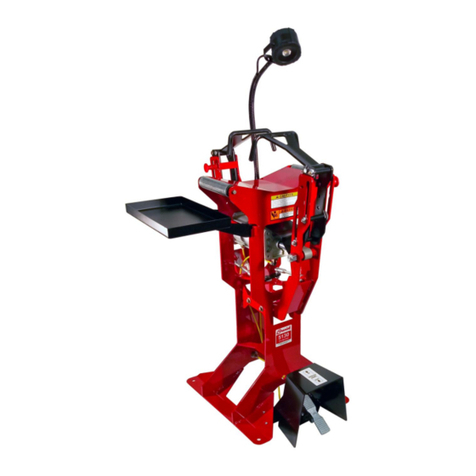
Branick
Branick 5130 Installation, Operation & Repair Parts Information
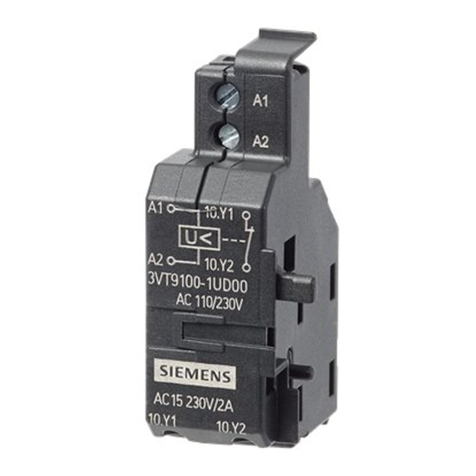
Siemens
Siemens 3VT9100-1U.00 operating instructions
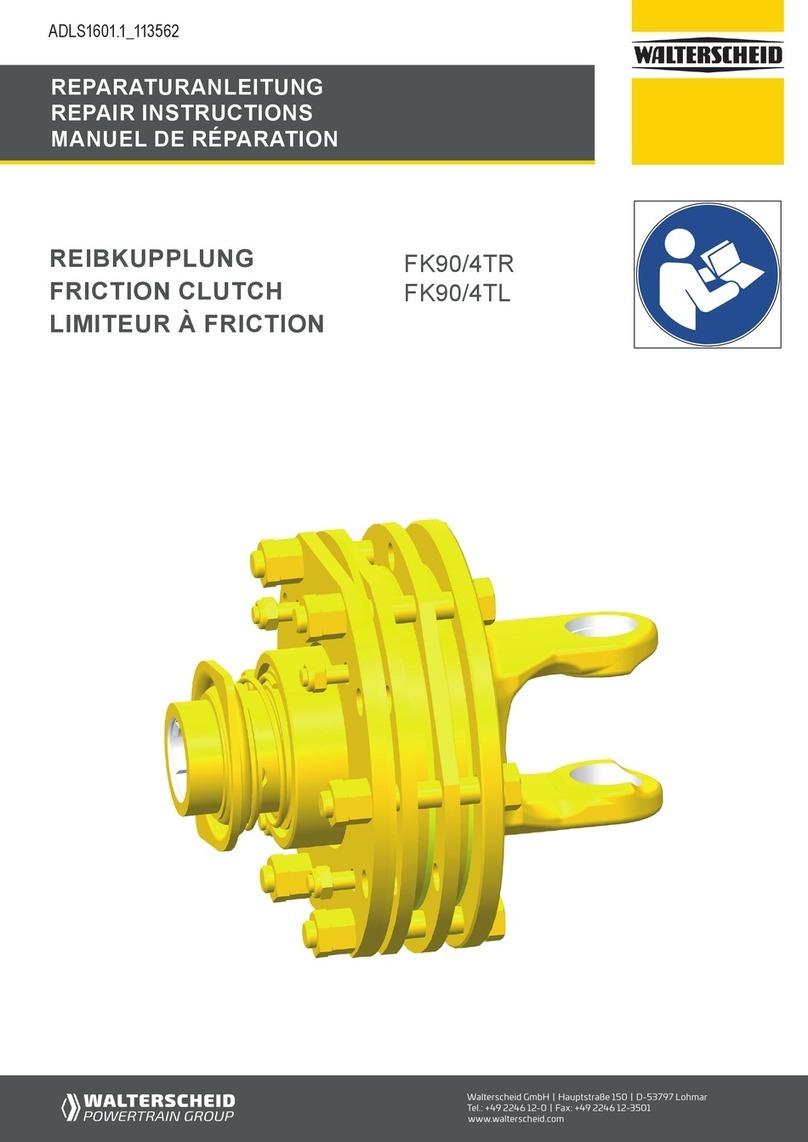
WALTERSCHEID
WALTERSCHEID FK90/4TR Repair instructions
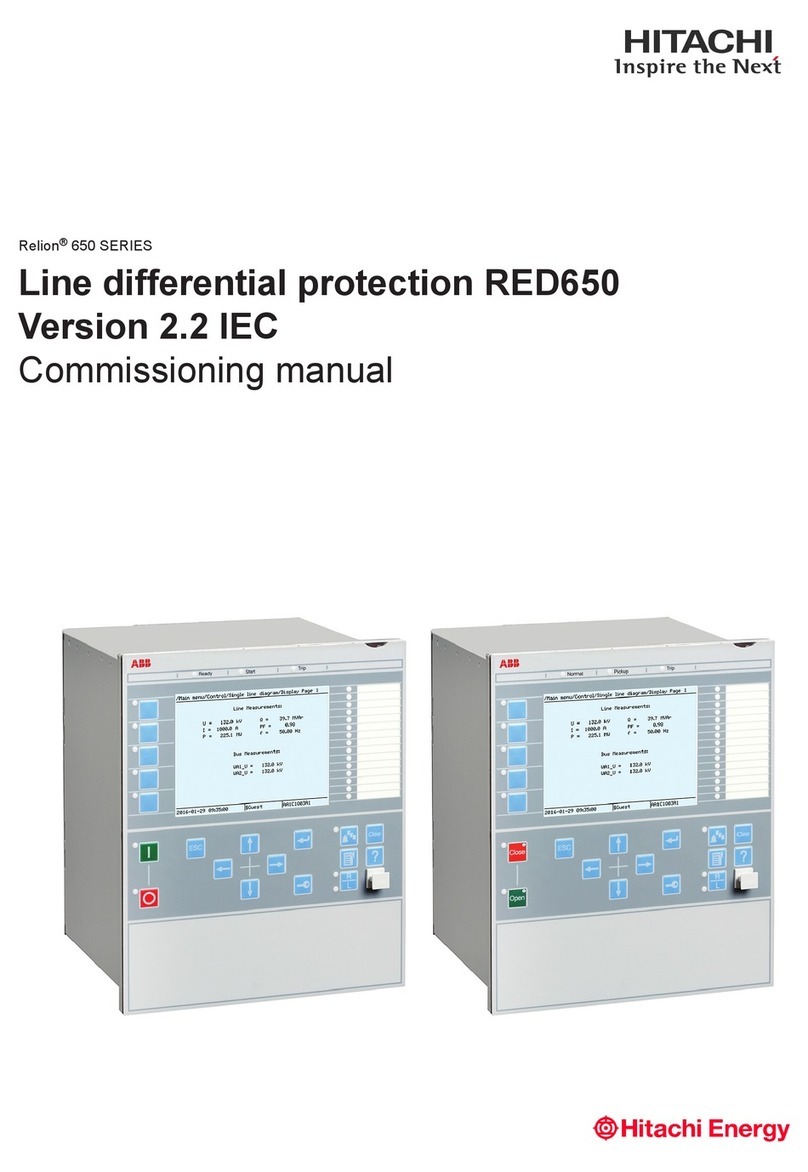
ABB
ABB RELION 650 SERIES Commissioning manual
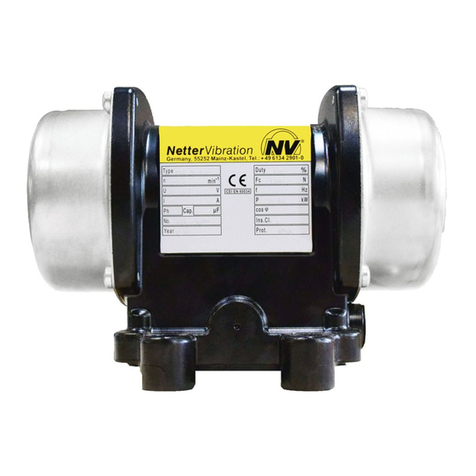
NetterVibration
NetterVibration NED 605 instruction manual

Range Road
Range Road RR5022 Series owner's manual

